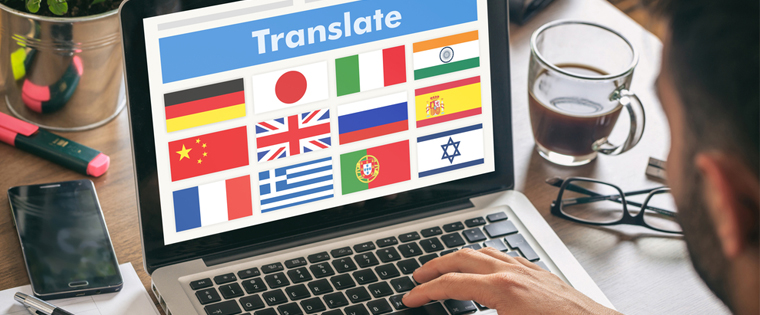7 Secrets of Successful E-learning Localization

We live in a world where increasing numbers of companies are expanding their businesses to new shores. As globalization becomes the norm of the day, organizations are compelled to adapt their online materials to the needs and preferences of audiences in specific regions, and e-learning courses are no exception.
What does it take to localize web-based learning content effectively? How can you ensure that your technology-enabled learning materials meet the learning requirements of employees who have diverse ethnic backgrounds and speak different languages? You need to focus on 7 key aspects.
1. Having a Good Idea Of The Learners’ Linguistic Background
Spare no effort to know the linguistic preferences of the target audiences of your localized e-learning courses. Then, segment the audiences into different groups on the basis of language and country. This is important because you may need more than one localized version of your online course. For instance, in Belgium, there are three languages spoken, with varying cultures. It is important to allow your staff members to choose a language rather than a country, to ensure effective targeting.
2. Ensuring That The Design Of The Online Learning Content Is Culture-agnostic
Various studies by social psychologists such as Gert Hofstede have revealed that the culture of a person profoundly influences the way he learns. Based on these studies, Mercado et al made certain recommendations to create online courses to suit learners from different cultures. They advocate focus on four key aspects when designing e-learning courses for global audiences.
- Formulation of a culture-neutral instructional strategy
- Language used in the course
- Use of visuals
- Tone and voice of the narrator
To know about these aspects in detail, check out the interesting post Creating a Culture-Agnostic Online Course for Your Global Workforce.
3. Providing for expanded text
This is a very important aspect you need to focus on. In many cases, the text of a localized e-learning course is longer than its English source. For example, the text in German is longer than its English version. This could create issues if the text holders cannot accommodate the expanded text. When you develop web-based learning materials in English, you need to make sure that there is ample whitespace which can “take in” the text after expansion. It is necessary to see that the horizontal navigation bars, menus, and other text holders are flexible, so that they don’t cause problems. This is important to avoid re-work and keep online learning content localization costs to a minimum.
4. Creating a “Universal” Style For Your Web-based Learning Content
Today, you may need to translate content only in five languages, but two years down the line the number of languages could increase to 15. You need to come up with a “universal” style to develop e-learning courses that convey the intended message effectively to all learners, irrespective of the language in which they access the online course. One of our clients in the automotive space has come up with a style for its online product training courses. The style has helped the client ensure consistency in the tone of the learning content, the format in which details of the products to be presented and other aspects, across multiple language versions of the courses.
5. Understanding How Learners Access E-learning Content
Learners in different countries are accustomed to reading text in different ways. For instance, learners in the Middle East are habituated to reading text right-to-left. You need to ensure that different “reading orientations” are factored in when you localize technology-enabled learning content, to ensure smooth learning experiences.
6. Adopting Internationalization (i18n) Standards To E-learning Content
It is necessary to see that i18n standards are applied to the content of your technology-enabled learning material. You need to take care to ensure various elements such as the user-interface of the course, date and currency display formats are internationalized properly. Applying i18n standards is very useful to prevent learner confusion. For instance, in the USA, the date 10 May,2017 is written as 5-10-2017. Whereas, in India and other south Asian countries, it is written as 10-5-2017. Things will be clearer if the date is written using the internationally-accepted format (YYYY-MM-DD) i.e., 2017-05-10. Alternatively, the date can be written as 10-May-2017.
7. Facilitating Hassle-free Review Of Localized Web-based Courses
Last, but not the least, you need to ensure that reviews of localized e-learning content are completed on time. This is very important to prevent cost overruns in your online learning content localization project. See that all stakeholders coordinate effectively. It is better to assign a knowledgeable person as the Single Point of Contact (SPOC) to ensure effective coordination and communication.
Proper localization of your technology-enabled learning resources goes a long way in imparting effective training to your multinational, multilingual workforce. Focus on the aspects listed above to successfully localize your e-learning content.





